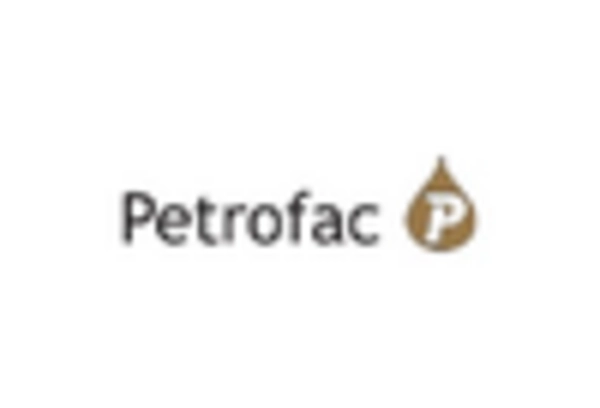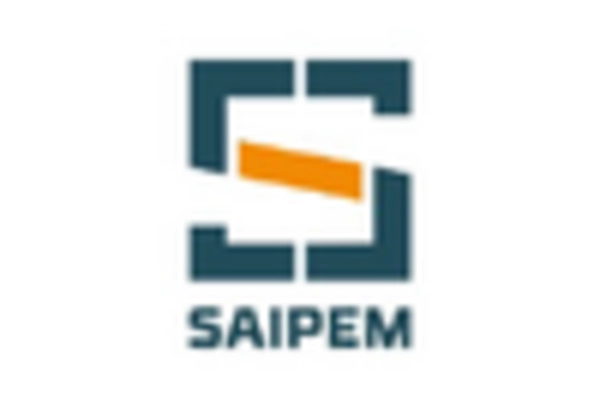Increasing Regulatory Scrutiny
The offshore decommissioning market is experiencing heightened regulatory scrutiny as environmental concerns gain prominence. Regulatory bodies are enforcing stricter guidelines to ensure that decommissioning activities minimize ecological impact. This trend is evident in the recent implementation of regulations that mandate comprehensive environmental assessments prior to decommissioning projects. As a result, companies are compelled to invest in advanced technologies and methodologies to comply with these regulations. The financial implications are significant, with estimates suggesting that compliance costs could account for up to 30% of total decommissioning expenses. This increasing regulatory scrutiny is likely to drive demand for specialized services within the offshore decommissioning market, as firms seek to navigate the complex landscape of environmental compliance.
Aging Infrastructure and Assets
The offshore decommissioning market is significantly influenced by the aging infrastructure and assets in the energy sector. Many offshore platforms and facilities are reaching the end of their operational life, necessitating decommissioning to ensure safety and environmental protection. According to industry reports, approximately 50% of offshore oil and gas platforms in the US are over 30 years old, indicating a pressing need for decommissioning services. This aging infrastructure presents both challenges and opportunities for the market, as operators must balance the costs of decommissioning with the potential for new developments. The demand for decommissioning services is expected to rise as more assets become obsolete, thereby driving growth in the offshore decommissioning market.
Growing Environmental Awareness
The offshore decommissioning market is being propelled by a growing environmental awareness among stakeholders, including governments, companies, and the public. There is an increasing recognition of the need for sustainable practices in decommissioning activities to protect marine ecosystems. This shift in perception is leading to greater demand for environmentally responsible decommissioning solutions. Companies are now prioritizing eco-friendly methods, such as recycling materials and minimizing waste, to align with stakeholder expectations. This trend is reflected in the rising investments in sustainable technologies, which are projected to account for over 40% of total decommissioning expenditures in the coming years. As environmental awareness continues to rise, it is likely to drive innovation and investment in the offshore decommissioning market.
Technological Innovations in Decommissioning
Technological innovations are reshaping the offshore decommissioning market, offering new solutions for efficiency and cost-effectiveness. Advanced techniques such as remote-operated vehicles (ROVs) and automated systems are being increasingly utilized to streamline decommissioning processes. These technologies not only enhance safety but also reduce the time and costs associated with decommissioning projects. For instance, the use of ROVs can decrease operational downtime by up to 25%, thereby improving overall project economics. As companies seek to optimize their decommissioning strategies, the integration of these technologies is likely to become a key driver in the offshore decommissioning market, fostering a competitive edge for early adopters.
Economic Viability of Decommissioning Projects
The economic viability of decommissioning projects is a crucial driver in the offshore decommissioning market. As oil and gas prices fluctuate, companies are increasingly evaluating the financial implications of decommissioning versus continued operation. The cost of decommissioning can be substantial, often reaching millions of dollars, which necessitates careful financial planning. Recent analyses indicate that the average cost of decommissioning an offshore platform can range from $10 million to $100 million, depending on various factors such as location and complexity. This economic consideration is prompting operators to explore alternative funding mechanisms, including partnerships and government incentives, to mitigate financial risks. Consequently, the economic landscape is likely to shape the strategies employed within the offshore decommissioning market.

















Leave a Comment